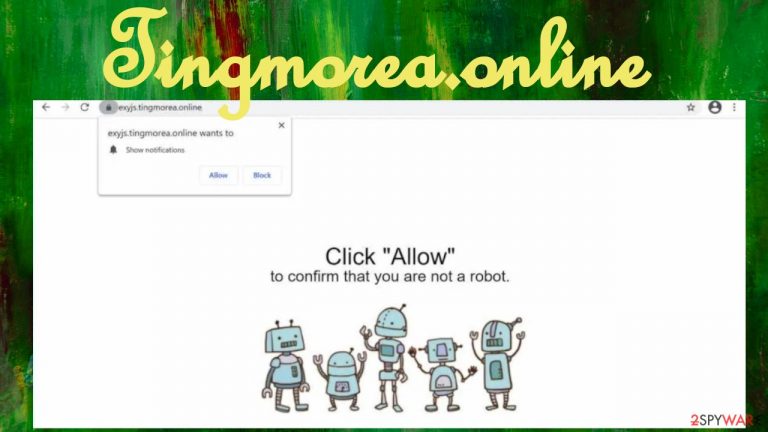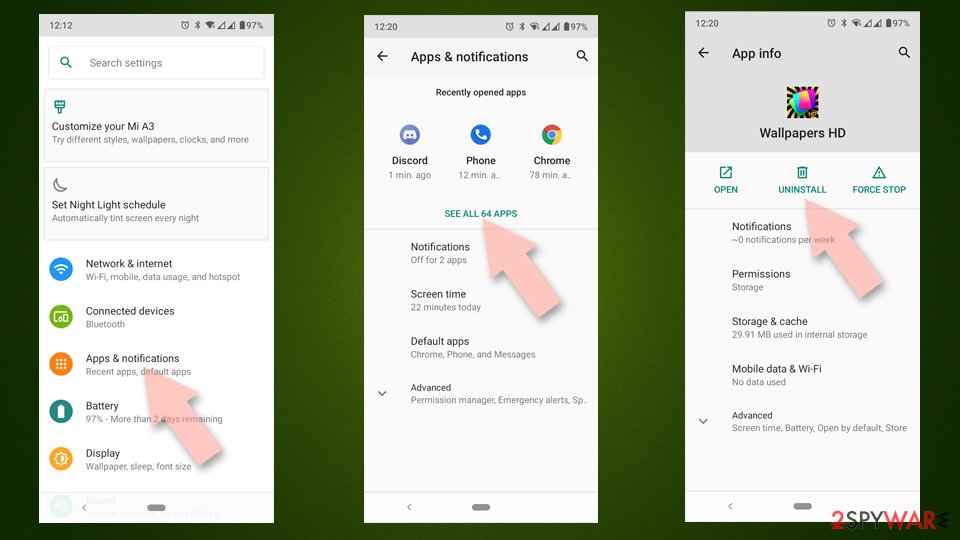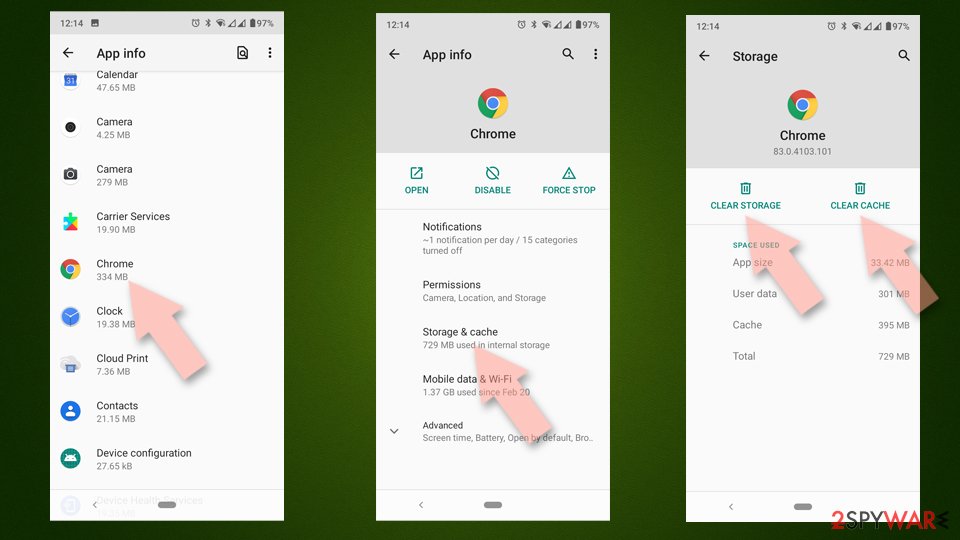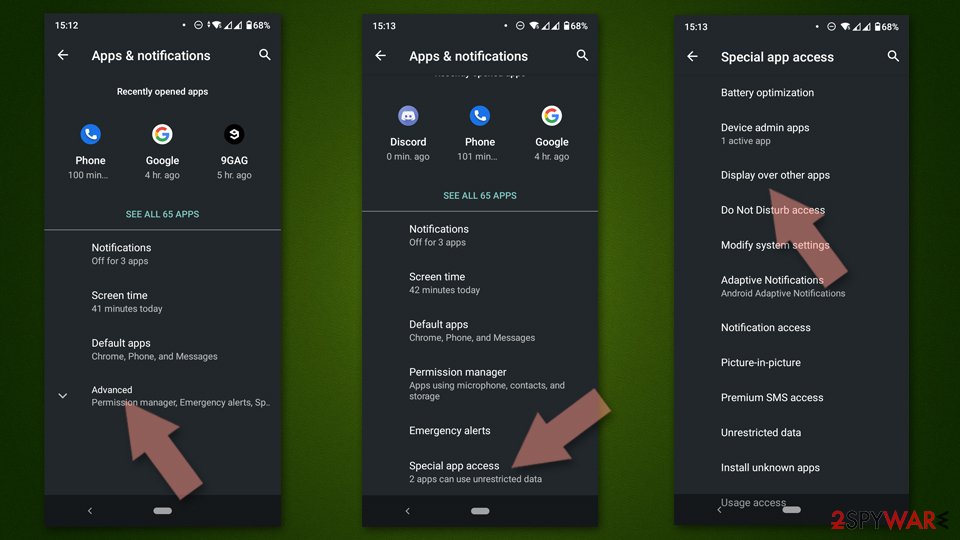Tingmorea.online (Removal Guide) - Free Instructions
Tingmorea.online Removal Guide
What is Tingmorea.online?
Tingmorea.online – a shady portal that tries to deceive visitors into allowing its notifications by showing various misleading prompts

Tingmorea.online is a push notification virus that, at the time of the research, showed a deceptive prompt trying to trick users into pressing the Allow button to prove that they're not robots. Please note that any website that pushes you to subscribe to its notification by proving or confirming something is a dubious portal, and you shouldn't accept them.
This website might try to convince you into pressing the Allow button by showing various prompts that urge you to confirm that you're over 18 years old, continue watching a video, download a file, enter the page, etc. The prompt variations depend on your geolocation.
If you accept notifications from Tingmorea.online virus, you will immediately start to see its advertisements in the form of notifications. These ads will pop-up straight on your phone screen or on the computer's desktop. We'll explain how to remove these notifications and tune-up your device easily.
| name | Tingmorea.online |
|---|---|
| Type | PUP, adware, redirect virus |
| IP address | 34.196.151.230 |
| Purpose | Generate revenue by redirecting traffic to affiliates portals |
| Symptoms | Ads in the top-right or bottom-right corner of the desktop or directly on the cell phone screen. Redirects to questionable websites. Diminished device performance, slower browsing speed |
| Risks | Privacy issues, computer errors, malware infections, financial losses |
| Distribution | Freeware, fake Flash Player updates, deceptive ads, other PUPs |
| Removal | To eliminate any unwelcome guests from your device, you must perform a full system scan with a reliable anti-malware engine |
| System repair | Messy system files and tons of tracking cookies could slow down your device and cause various system errors. Resolve all these issues by using the all-in-one FortectIntego system diagnostics tool |
Push notifications virus portals are created every day. People don't usually visit such treacherous sites, so their developers use various shady techniques to generate traffic to them. There are three scenarios that might lead to you visiting Tingmorea.online if you didn't type in the address manually:
- mistyping an address of a familiar site,
- pressing on deceptive ads while visiting a shady website,
- having adware or other potentially unwanted programs[1] (PUPs for short) installed on your device in-use.
If you enable Tingmorea.online notifications, you will start to receive ads directly on your screen. PUP developers usually advertise one another or even sites with malware. Thus if you press on any of the ads shown as notifications, you might end up on hazardous sites.
Which may try to convince you to install other PUPs, infect your device with malware instantly through drive-by downloads, try to draw out your private information (address, phone number, credit card details, etc.), lure you into gambling, etc. So please, don't click on any Tingmorea.online ads.
But the worst part is that when you accept notifications from this site, it might force you into visiting any of its affiliated partners. That can be done if a Tingmorea.online redirect is triggered. Thus having this push notification virus is unsafe and should be taken care of immediately.

To remove Tingmorea.online and adware that could have caused the initial redirect to this shady site, use reliable anti-malware software. Free security tools such as SpyHunter 5Combo Cleaner or Malwarebytes will do the dirty work for you and eliminate any files or apps that shouldn't be on your device.
Afterward, a system diagnostic is in order to revert any modifications infections could have done to your system files/settings and eliminate their residual files. According to IT experts,[2] users should use the time-proven FortectIntego system repair tool after Tingmorea.online removal.
PUPs are usually distributed within software bundles from third-party vendors
Potentially unwanted programs are everywhere, and users have to be aware of that. A conducted research,[3] has shown that one of the major third-party software vendors on the internet had PUPs in 31 out of 50 of its most popular downloads.
That shows the importance of paying attention to the installation of new software. If you don't, your device might get easily infected with browser hijackers, adware, or other PUPs. And the trick is straightforward, all apps within the software bundle are preselected for installation.
Thus when you choose the Recommended, Standard, or Quick modes, all of them are installed. The only way to avoid PUPs from bundles is to take your time and select the Custom or Advanced installation mode. Then remove ticks from preselected apps that you don't want, don't need, or didn't even know would be installed in the first place.

Simple steps to remove Tingmorea.online notifications from your device for good
Push notification service is a terrific way of finding out the latest sports updates, breaking news, sales, and so on. But it would be best if you accepted notifications only from legitimate sources that you often visit, so you don't infect your devices with Tingmorea.online virus, Pu6.biz virus, Myknowing.biz virus, Goodluckdog.space virus, and cyber threats alike.
It doesn't matter if you or your kids or whoever else was using your device in-question pressed the Allow button. It's time for Tingmorea.online removal. First, scan your device with a trustworthy anti-malware tool to find and eliminate any PUPs that might have caused redirects.
Then use our detailed manuals below to remove Tingmorea.online from your Chrome, Firefox, Safari, or any other browser. And lastly, run system diagnostics with compatible system repair tools to eliminate any residual files, restore system keys and values back to order, and clean up tracking cookies.
You may remove virus damage with a help of FortectIntego. SpyHunter 5Combo Cleaner and Malwarebytes are recommended to detect potentially unwanted programs and viruses with all their files and registry entries that are related to them.
Getting rid of Tingmorea.online. Follow these steps
Stop browser notifications
Remove unwanted notifications from Google Chrome (desktop):
- Open Google Chrome browser and go to Menu > Settings.
- Scroll down and click on Advanced.
- Locate Privacy and security section and pick Site Settings > Notifications.

- Look at the Allow section and look for a suspicious URL.
- Click the three vertical dots next to it and pick Block. This should remove unwanted notifications from Google Chrome.

Remove unwanted notifications from Google Chrome (Android):
- Open Google Chrome and tap on Settings (three vertical dots).
- Select Notifications.
- Scroll down to the Sites section.
- Locate the unwanted URL and toggle the button to the left (Off setting).

Remove unwanted notifications from Mozilla Firefox:
- Open Mozilla Firefox and go to Menu > Options.
- Click on Privacy & Security section.
- Under Permissions, you should be able to see Notifications. Click the Settings button next to it.

- In the Settings – Notification Permissions window, click on the drop-down menu by the URL in question.
- Select Block and then click on Save Changes. This should remove unwanted notifications from Mozilla Firefox.

Remove unwanted notifications from Safari:
- Click on Safari > Preferences…
- Go to the Websites tab and, under General, select Notifications.
- Select the web address in question, click the drop-down menu and select Deny.

Remove unwanted notifications from MS Edge:
- Open Microsoft Edge, and click the Settings and more button (three horizontal dots) at the top-right of the window.
- Select Settings and then go to Advanced.
- Under Website permissions, pick Manage permissions and select the URL in question.

- Toggle the switch to the left to turn notifications off on Microsoft Edge.

Remove unwanted notifications from MS Edge (Chromium):
- Open Microsoft Edge, and go to Settings.
- Select Site permissions.
- Go to Notifications on the right.
- Under Allow, you will find the unwanted entry.
- Click on More actions and select Block.

Remove unwanted notifications from Internet Explorer:
- Open Internet Explorer, and click on the Gear icon at the top-right of the window.
- Select Internet options and go to the Privacy tab.
- In the Pop-up Blocker section, click on Settings.
- Locate web address in question under Allowed sites and pick Remove.

Uninstall from Windows
Instructions for Windows 10/8 machines:
- Enter Control Panel into Windows search box and hit Enter or click on the search result.
- Under Programs, select Uninstall a program.

- From the list, find the entry of the suspicious program.
- Right-click on the application and select Uninstall.
- If User Account Control shows up, click Yes.
- Wait till uninstallation process is complete and click OK.

If you are Windows 7/XP user, proceed with the following instructions:
- Click on Windows Start > Control Panel located on the right pane (if you are Windows XP user, click on Add/Remove Programs).
- In Control Panel, select Programs > Uninstall a program.

- Pick the unwanted application by clicking on it once.
- At the top, click Uninstall/Change.
- In the confirmation prompt, pick Yes.
- Click OK once the removal process is finished.
Delete from macOS
Remove items from Applications folder:
- From the menu bar, select Go > Applications.
- In the Applications folder, look for all related entries.
- Click on the app and drag it to Trash (or right-click and pick Move to Trash)

To fully remove an unwanted app, you need to access Application Support, LaunchAgents, and LaunchDaemons folders and delete relevant files:
- Select Go > Go to Folder.
- Enter /Library/Application Support and click Go or press Enter.
- In the Application Support folder, look for any dubious entries and then delete them.
- Now enter /Library/LaunchAgents and /Library/LaunchDaemons folders the same way and terminate all the related .plist files.

Uninstall from Android
Uninstall unwanted programs from Android device:
- Go to Settings -> Apps/Applications.
- Expand the full list of the installed apps.
- Scroll through the list and tap on a suspicious application once.
- Tap on it and select Uninstall.

- Reboot the device.
Clear Storage and data files on Android from Google Chrome or other apps:
- Go to Settings > Apps/Applications.
- Expand the full list of the installed apps.
- Tap on Chrome and select Storage & cache.
- Clear storage and clear cache of the app.

If you are seeing ads on top of other apps but are not sure what is causing it, perform the following steps:
- Go to Apps/Applications.
- Tap Advanced.
- Select Special App access.
- Tap on Display over other apps.

- Eliminate apps with these access rights enabled.
Remove from Microsoft Edge
Delete unwanted extensions from MS Edge:
- Select Menu (three horizontal dots at the top-right of the browser window) and pick Extensions.
- From the list, pick the extension and click on the Gear icon.
- Click on Uninstall at the bottom.

Clear cookies and other browser data:
- Click on the Menu (three horizontal dots at the top-right of the browser window) and select Privacy & security.
- Under Clear browsing data, pick Choose what to clear.
- Select everything (apart from passwords, although you might want to include Media licenses as well, if applicable) and click on Clear.

Restore new tab and homepage settings:
- Click the menu icon and choose Settings.
- Then find On startup section.
- Click Disable if you found any suspicious domain.
Reset MS Edge if the above steps did not work:
- Press on Ctrl + Shift + Esc to open Task Manager.
- Click on More details arrow at the bottom of the window.
- Select Details tab.
- Now scroll down and locate every entry with Microsoft Edge name in it. Right-click on each of them and select End Task to stop MS Edge from running.

If this solution failed to help you, you need to use an advanced Edge reset method. Note that you need to backup your data before proceeding.
- Find the following folder on your computer: C:\\Users\\%username%\\AppData\\Local\\Packages\\Microsoft.MicrosoftEdge_8wekyb3d8bbwe.
- Press Ctrl + A on your keyboard to select all folders.
- Right-click on them and pick Delete

- Now right-click on the Start button and pick Windows PowerShell (Admin).
- When the new window opens, copy and paste the following command, and then press Enter:
Get-AppXPackage -AllUsers -Name Microsoft.MicrosoftEdge | Foreach {Add-AppxPackage -DisableDevelopmentMode -Register “$($_.InstallLocation)\\AppXManifest.xml” -Verbose

Instructions for Chromium-based Edge
Delete extensions from MS Edge (Chromium):
- Open Edge and click select Settings > Extensions.
- Delete unwanted extensions by clicking Remove.

Clear cache and site data:
- Click on Menu and go to Settings.
- Select Privacy, search and services.
- Under Clear browsing data, pick Choose what to clear.
- Under Time range, pick All time.
- Select Clear now.

Reset Chromium-based MS Edge:
- Click on Menu and select Settings.
- On the left side, pick Reset settings.
- Select Restore settings to their default values.
- Confirm with Reset.

Remove from Mozilla Firefox (FF)
Remove dangerous extensions:
- Open Mozilla Firefox browser and click on the Menu (three horizontal lines at the top-right of the window).
- Select Add-ons.
- In here, select unwanted plugin and click Remove.

Reset the homepage:
- Click three horizontal lines at the top right corner to open the menu.
- Choose Options.
- Under Home options, enter your preferred site that will open every time you newly open the Mozilla Firefox.
Clear cookies and site data:
- Click Menu and pick Settings.
- Go to Privacy & Security section.
- Scroll down to locate Cookies and Site Data.
- Click on Clear Data…
- Select Cookies and Site Data, as well as Cached Web Content and press Clear.

Reset Mozilla Firefox
If clearing the browser as explained above did not help, reset Mozilla Firefox:
- Open Mozilla Firefox browser and click the Menu.
- Go to Help and then choose Troubleshooting Information.

- Under Give Firefox a tune up section, click on Refresh Firefox…
- Once the pop-up shows up, confirm the action by pressing on Refresh Firefox.

Remove from Google Chrome
Delete malicious extensions from Google Chrome:
- Open Google Chrome, click on the Menu (three vertical dots at the top-right corner) and select More tools > Extensions.
- In the newly opened window, you will see all the installed extensions. Uninstall all the suspicious plugins that might be related to the unwanted program by clicking Remove.

Clear cache and web data from Chrome:
- Click on Menu and pick Settings.
- Under Privacy and security, select Clear browsing data.
- Select Browsing history, Cookies and other site data, as well as Cached images and files.
- Click Clear data.

Change your homepage:
- Click menu and choose Settings.
- Look for a suspicious site in the On startup section.
- Click on Open a specific or set of pages and click on three dots to find the Remove option.
Reset Google Chrome:
If the previous methods did not help you, reset Google Chrome to eliminate all the unwanted components:
- Click on Menu and select Settings.
- In the Settings, scroll down and click Advanced.
- Scroll down and locate Reset and clean up section.
- Now click Restore settings to their original defaults.
- Confirm with Reset settings.

Delete from Safari
Remove unwanted extensions from Safari:
- Click Safari > Preferences…
- In the new window, pick Extensions.
- Select the unwanted extension and select Uninstall.

Clear cookies and other website data from Safari:
- Click Safari > Clear History…
- From the drop-down menu under Clear, pick all history.
- Confirm with Clear History.

Reset Safari if the above-mentioned steps did not help you:
- Click Safari > Preferences…
- Go to Advanced tab.
- Tick the Show Develop menu in menu bar.
- From the menu bar, click Develop, and then select Empty Caches.

After uninstalling this potentially unwanted program (PUP) and fixing each of your web browsers, we recommend you to scan your PC system with a reputable anti-spyware. This will help you to get rid of Tingmorea.online registry traces and will also identify related parasites or possible malware infections on your computer. For that you can use our top-rated malware remover: FortectIntego, SpyHunter 5Combo Cleaner or Malwarebytes.
How to prevent from getting adware
Access your website securely from any location
When you work on the domain, site, blog, or different project that requires constant management, content creation, or coding, you may need to connect to the server and content management service more often. The best solution for creating a tighter network could be a dedicated/fixed IP address.
If you make your IP address static and set to your device, you can connect to the CMS from any location and do not create any additional issues for the server or network manager that needs to monitor connections and activities. VPN software providers like Private Internet Access can help you with such settings and offer the option to control the online reputation and manage projects easily from any part of the world.
Recover files after data-affecting malware attacks
While much of the data can be accidentally deleted due to various reasons, malware is one of the main culprits that can cause loss of pictures, documents, videos, and other important files. More serious malware infections lead to significant data loss when your documents, system files, and images get encrypted. In particular, ransomware is is a type of malware that focuses on such functions, so your files become useless without an ability to access them.
Even though there is little to no possibility to recover after file-locking threats, some applications have features for data recovery in the system. In some cases, Data Recovery Pro can also help to recover at least some portion of your data after data-locking virus infection or general cyber infection.
- ^ Potentially Unwanted Programs slow down your system and can be harmful: Here’s what can you do about it. Emsisoft. Security blog.
- ^ Avirus. Avirus. Spyware news and security.
- ^ 62% of the Top 50 Download.com applications bundle toolbars and other PUPs. Aheliotech. It consulting services.
